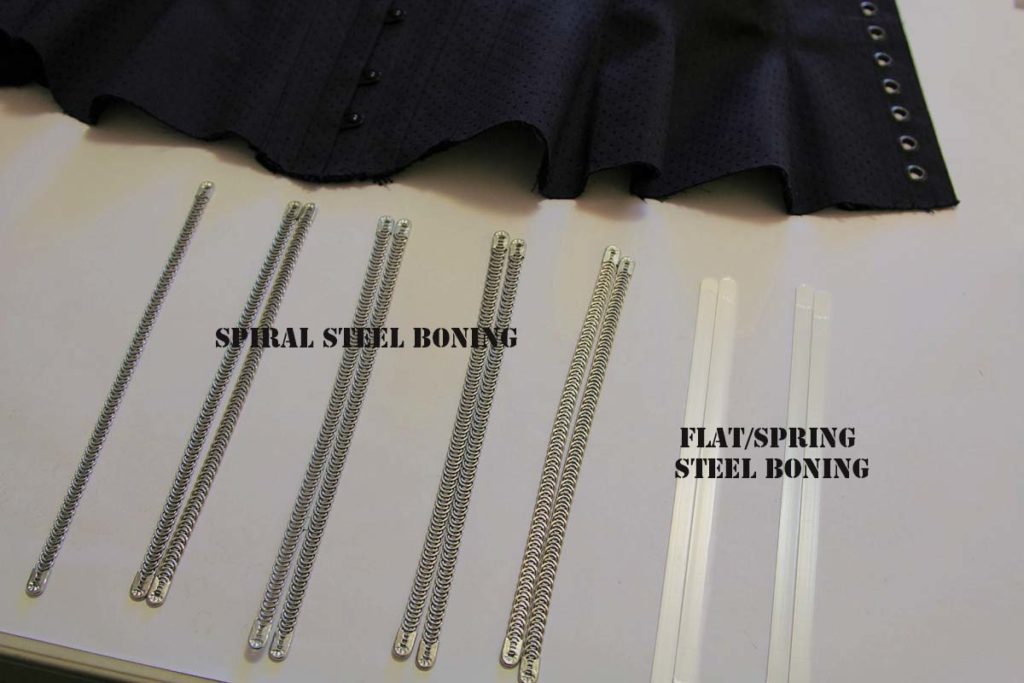Waist Training Corset: What’s The Difference Between Spiral Steel Boning & Flat Steel Boning?

A corset without steel bones is like a motorcycle without gas-oil – it doesn’t work at all. That is reason why steel bones and lacing are essential because that make waist-training your abdomen into an hourglass shape possible.
History of Steel Boning
Confusion about the spring steel boning and spiral steel boning is nothing new. It can trace back to the 16th Century, corsets made of “whalebones” but this material not really bones at all, it was baleen. Baleen is a stiff and flexible material was ideal for lining a corset. It was not until the 19th century that steel has been introduced, replacing the materials used previously such as wood, bone, etc. At that time, the type of steel boning is what we call as “flat steel boning.” It’s stiff because it bends in one direction. The flat steel boning doesn’t allow too much movement and flexibility, with only focus on the reshaping and support of the waist. Until the early 20th century, the spiral steel boning was born, due to corset evolution and taking into account wearer’s comfort. The spiral steel boning more flexibility and movement becomes possible.
So far, there are still myths about the flat steel bones and spiral steel bones found in waist training corsets. Let me list both of the pros and cons.
Pros of Flat Steel Boning
Flat steel boning is made by stripping steel sheets and then rounding the sharp edges. These strips are durable and rigid, so flat steel boning corset provides strong support for your abdomen and back while waist training, especially useful for those who are wearing corsets to help with back pain and posture.
Cons of Flat Steel Boning
The flat steel boning corset is rigid, making wearer movements difficult and feels un-comfortable; it seems like the feeling of being caged. It a feature particularly uncomfortable for anyone with curves.
Pros of Spiral Steel Boning
The spiral steel boning is in the form of a flattened coil, its design to allow for more fluid movement and can move in any direction. A spiral steel boning corset enables the wearer to function indeed while still being supported. Usually, dancers and stage performers preferred spiral steel bones corset than flat steel boned corset.
Cons of Spiral Steel Boning
Corsets are meant to provide support but may find that the spiral steel bones are too soft. If your concern about rigid structures and reshaping as well as not care comfort, you may prefer flat steel bones instead of the spiral steel boned corset.
We know that flat steel bones and spiral steel bones have their advantages and advantages. That why most corsets on the market today are entirely spiral steel bones or a combination of the two. The altogether spiral steel boned corsets are the most comfortable and durability, it usually perfect for anyone who pursues fashion as well as performs dancing and acting.
The combination corset is the corset made of spiral and flat steel bones. The back of corsets is fitted with four flat steel bones to provide sturdy back support. By overtime, corset helps to strengthen your back muscles and provide better waist training results. The remainder of entire corset also inserted the spiral steel bones which ensure smooth movement and allows the corset to mold to your shape for comfort. The combination corsets are ideal for waist-training that featuring comfortable, rigidity and form-fitting design that brings considerable results to the wearer.